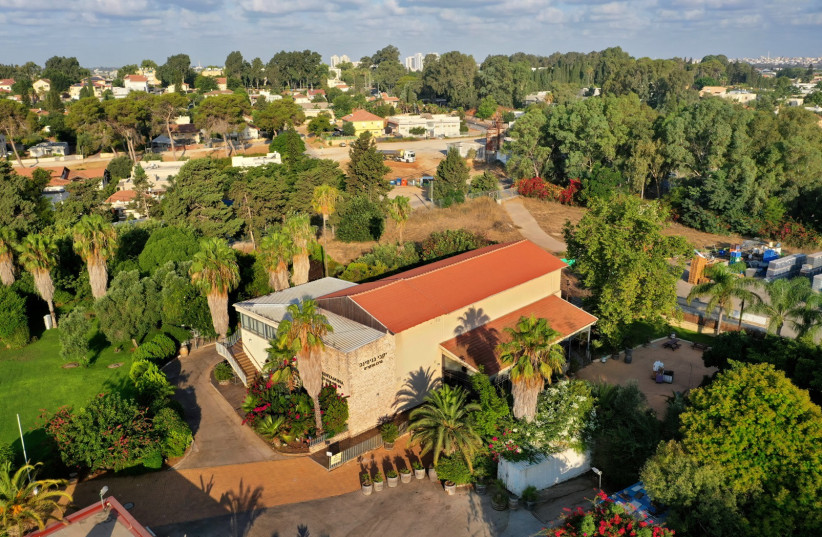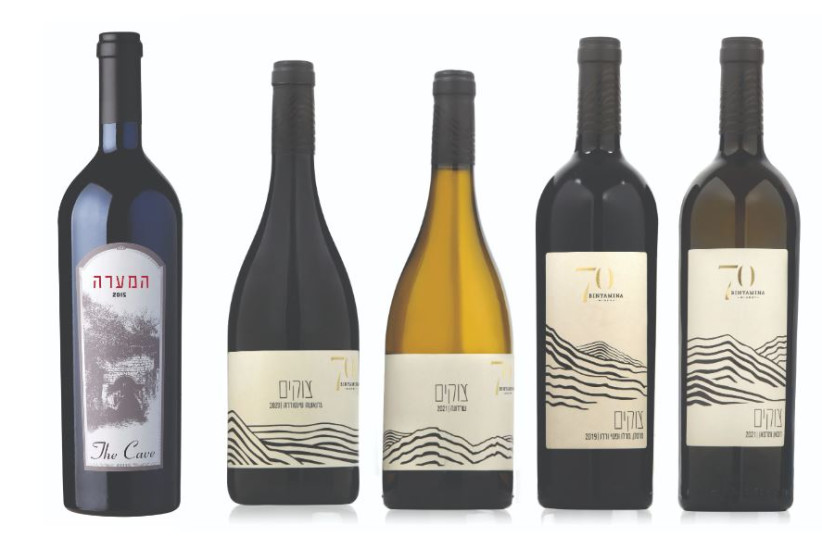Binyamina Winery is celebrating its 70th birthday, which is an achievement when you consider most of the Israeli wineries were founded in the last 30 years.
Binyamina is the town at the southern foot of the Mount Carmel mountain range and it is the only one named after Baron Edmond de Rothschild himself. Zichron Yaakov was named after his father and Bat Shlomo after his mother, but Edmond’s Hebrew name was Binyamin. So, the town of Binyamina commemorates the person who founded the modern Israel wine industry.
Binyamina Winery was previously called Eliaz Winery and the company was registered as Eliaz Binyamina (1818) Ltd. Their roots go back to 1951 when, as a producer of soft drinks and liqueurs, they approached PICA, a company founded by Rothschild to manage his interests in Israel. They wanted to take over a disused Jasmine perfume factory, established by Edmond’s son, James. It had closed in the mid-1930s and lay unused.
There were incredible vociferous disputes involving PICA, the landlords, the Binyamina Council, Carmel Mizrahi and Eliaz. In classic Israeli fashion, all were pulling in different directions. Eventually, then-prime minister David Ben-Gurion had to intervene. Older readers may remember Eliaz Hard Nut Liqueur, made later in his honor!
Eliaz was owned by Hungarian born Joseph Seltzer, who experienced the traumas of being Jewish to the full. Firstly, he managed to survive the Holocaust. Then, he had to flee from the communists. He made aliyah to Israel, only to tragically lose his son Eliezer in the War of Independence, soon after he arrived. Eliaz was named in his son’s memory.

Much to Carmel’s annoyance and to the embarrassment of PICA, Eliaz started making wine in 1952. They felt it went against their agreement, and this state of affairs rumbled on until it was resolved, in 1956. Still, by the 1960’s, Eliaz had become the second largest winery in Israel, after the monopoly of Carmel Mizrahi. However, by the time I made aliyah in 1989, the reputation of Eliaz wines was pretty dire and it did not seem to bother anyone very much. They were mainly known for making liquid religion (kiddush wine) and liqueurs.
The winery had a series of silent, absent owners, after Seltzer sold out. These included English bankers, an ultra-orthodox Canadian family and even film producers in Los Angeles. Things started to look up when Ilan Hasson, a salesman within the company, became a young but very dynamic and progressive CEO. The winery began its metamorphosis to becoming a modern winery. They introduced more new technology. The name was changed to Binyamina Winery and the branding was updated and labels modernized. They were then the fifth largest winery in the country. These were good years for the winery.
One of their new initiatives was to create a boutique wine called The Cave. This was named after a real cave dug into the Hurshan hill, east of Zichron Yaakov. It is 90 m. long with stone walls. It was built by the Zichron Yaakov Winery to provide extra storage but was later abandoned. Joseph Seltzer bought it cheaply for aging brandy, but the new Binyamina Winery used it for aging their new prestige wine.
This prestige wine was made at the winery, but matured in barrels in the cave. The marketing people chose a big heavy bottle and sold it for a heavy price. For the American market, they made a mevushal (flash pasteurized) edition and the wine became particularly appreciated amongst religious wine lovers.
By the way, over the last 20 years, I have tried on and off, with different winemakers and winery management, to get someone to take me to see this cave. Up to now, I have failed in this mission, even in my new incarnation as a wine writer.
In 2008, the winery was bought by the owner of the Hezi Hinam supermarket chain. There were more investments in equipment. However, since then, I have to say they have gone a great deal quieter and they have kept a low profile. They are certainly less active in marketing and public relations than all the other large wineries. There was even a dip in wine production at one stage. However, I understand they have returned to producing just under two million bottles of wine a year.

THEIR VISITORS center is in the old perfume factory building. The Southern Mount Carmel Wine Route is well worth a visit. Binyamina and Zichron Yaakov are winery towns easily accessible from the center of the country. Wineries like Carmel, Binyamina and Tishbi are situated comparatively close together, and they each represent different eras. As well, there are a fair amount of small boutique wineries nearby and plenty of vineyards around for a picnic. It would be easy to organize a day of winery visits that would satisfy the most demanding wine tourists.
The CEO is Oshik Ephraim, who is also the CEO of Vita Pri Hagalil. He has been in place for the last ten years. The winemaker is Yonatan Shotts, who joined the winery in 2015 and became the head winemaker in 2018. He graduated in Florence and gained valuable work experience in Australia, Italy and Israel, before joining Binyamina.
The main labels are the entry level Teva, followed by Moshava, Yogev, Reserve, Tsukim (cliffs), the new label to celebrate the anniversary and up to the premier label, Choshen. The winery’s vineyards cover all the main regions, including the Galilee and Golan Heights. They are particularly proud of the vineyard they have developed on the slopes of Mount Gilboa.

My personal favorite wines at different price points are the fresh Moshava Merlot, the flavorful Yogev Cabernet Petit Verdot, the refreshing Parfum de Binyamina Rose, the complex Tsukim Roussanne Marsanne and the richly flavored Choshen Ruby Syrah. I also like their Marselan.
The wines are certainly better than the current image of the winery and for that, credit goes to the winemaker. As far as the marketing and management of the winery, they have a lot of work to do to make Binyamina sing again! Let’s hope the encouraging burst of activity to celebrate the 70th anniversary is heralding a new dawn.
The veteran wineries
Whilst commemorating Binyamina’s longevity, it is interesting to consider other veteran wineries. Pre-state, the big daddy of them all, is Zion Winery, founded in 1848 (then known as Shor Winery), in the Old City of Jerusalem. It remains our oldest existing winery. Teperberg Winery was founded in 1870 in the Old City. The Teperbergs came from Ukraine via Austria, hence the Germanic sounding name. It is Israel’s largest family winery. Carmel is the historic winery of Israel. The books say Carmel was established in 1882, but this is not strictly true. The first experimental vineyards were planted in 1882. Rishon Le Zion Cellars was opened in 1890 and Zichron Yaakov Cellars in 1892. A wine growers cooperative was established in 1906.
There are two monasteries that have been making wine for over 130 years. Cremisan Wine Estate was established in 1885 at the Salesian Monastery in Beit Jalla, near Bethlehem. Cremisan is the largest, oldest and most famous Palestinian winery. Domaine de Latroun was established in 1890, at the Trappist Monastery.
After the founding of the State of Israel, Segal Wines was founded in 1950 in Ramle by two Segal brothers, who were from a distilling family. It was sold to Barkan Winery in 2001. Now, Barkan-Segal is the largest winery in the country. The Jerusalem Vineyard Winery, (then named Shimshon), was founded by a member of the Shor family. It was inherited by his daughter and husband in 1951. Their visitors’ center is in the Montefiore Windmill in Mishkenot Sha’ananim. The Arza-Hayotzer Winery, was founded in the early 1950s and Hacormim Winery, in the late 1950s. They were both also established by members of the Shor family, which has been making wine since 1848.
Particularly remarkable are the stories of Carmel, which had the same grape growing families being part of the Societe Cooperative Vigneronne des Grandes Caves (the wine growers cooperative) for five generations. Or the Shor and Teperberg families, where wine has been passed down as a way of life from grandfather to son, and from son to grandson over generations – in their cases, respectively for 174 and 152 years! Not to be sneezed at.

The Binyamina anniversary reminds us that we did have wineries before the Golan Heights Winery was founded in 1983. It is a sad fact of life that better wines are made these days. Also, wine drinkers love small wineries and new shiny things. However, these wineries have survived all these years and are part of the fabric of our story.
It is a pity that some of them are their own worst enemies at preserving their history. It is almost as if they are ashamed of their long past, or more likely, it is because many current senior managers seem to have no feeling for image, heritage or wine culture. They are more interested in an instant fix of sales, cutting distribution costs and the daily needs of Instagram.
When I made aliyah, there were only 12 wineries. Now, there are 350, plus even more domestic wineries and garagistes. However, the wine revolution and so-called progress does not mean we should not pay respect to the survivors.
Happy anniversary to Binyamina Winery. I salute you and the few other wineries that have stood the test of time. ■
The writer is a wine industry insider turned wine writer, who has advanced Israeli wines for 35 years. He is referred to as the English voice of Israeli wine. www.adammontefiore.com.
